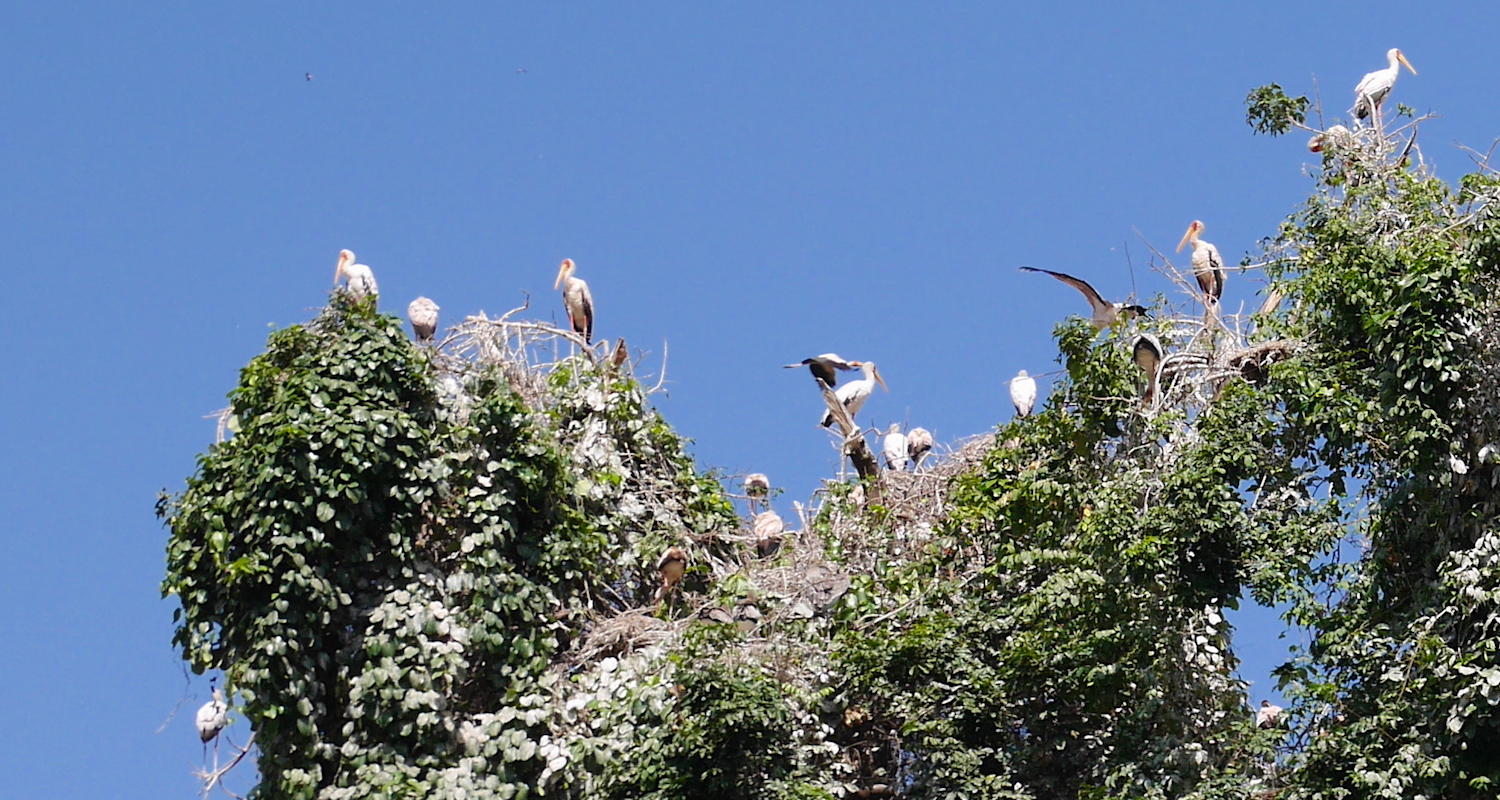““Even the stork in the sky knows her appointed seasons, and the dove, the swift and the thrush faithfully keep their migration patterns. But my people don’t. They are unfamiliar with the judgement of YHWH.””
Descending the Great Rift Escarpment. The escarpment drops to the surface of Lake Manyara.
Thick baobab trees squatted on the edge of the Great Rift Escarpment. They were as ancient and gnarled as the landscape of Tanzania itself. In the distance the sheen of Lake Manyara mingled with the sky. Specks suggestive of birds did the same. I hung out the window of the knobby-tyred truck feeling the wind in my face while Saidi navigated the switchbacks.
I could see why Ernest Hemingway chose to camp here in a forest of fig and mahogany. Eighty years ago he called the region of Lake Manyara "a country to wake up from" and "the loveliest I had seen in Africa."* From this vantage point it was hard to disagree with Papa.
Image of Northern Tanzania adapted from Google Earth.
At the base of the escarpment the trees closed ranks. We lost our view to the lake. In its place were other wonders though. Olive Baboons (Papio anubis) scampered (or simply sat) in the roadway. Walkers, bicycles, and enclosed scooters with colorful dongles and other accoutrements appeared as precursors to a town.
"What's the name of this place?"
"Mtowambu."
Saidi, ever economical with his words, didn't flinch when he added "'River of Mosquitos' in English."
I knew we had carried those anti-malarial drugs to the top of Kilimanjaro for a reason.
The edge of Mtowambu.
Needless to say we were not disappointed when the mosquito swarm failed to fall out the sky. But something else did. Something much larger, and, at a glance, more menacing. Swarms of giant storks were suddenly everywhere. They were beyond counting. In the hundreds? For sure. Thousands? Maybe. Some circled slowly overhead, great wings outstretched. Many more rested, nested, and clattered their bills from poo-spangled trees.
Storks and a poo-spangled. tree.
For Europeans, the White Stork (Ciconia ciconia) is a good omen. Because this graceful bird devours vermin and prevents fires (or so they say), locals encourage them to build nests on haystacks and telephone poles and rooftops and chimneys. From this proximity, stork behavior is observed and appreciated. They appear as faithful mates and caring parents, attributes that may account for the their legendary role as deliverers of baby-bundles.
The Hebrew term khasidah, translated as "stork," springs from one of the most beloved word-families in all the Bible. Khesed is often translated into English as "loyalty," "steadfast love," or "loving-kindness." Obviously, these birds were viewed in a favorable light by others outside of Europe as well!
Migration patterns route them through the Levant from Europe to Africa and back again. This likely explains a handful of appearances of the stork in the Hebrew Bible. They are remembered as birds with seasonal patterns (Jer 8:7), powered by astounding wings (Zech 5:8) and nesters in tall trees (Psalm 104:17). However, they are unclean as a food source (Lev 11:19).
The Yellow-billed Stork offers a fetching pose. Illustration by C.G. Finch Davies and accessed here on 4/11/2018.
Having belabored the point, only now must I confess that the storks of Mtowambu are not the Ciconia ciconia of European or biblical fame. The crowd on this end of the Great Rift hails from a different genera. The Yellow-billed Stork (Mycteria ibis) has a less heroic travel schedule and more localized habits. Like their cousins, Yellow-bills are large long-legged birds with an appetite. Their color is striking. A white body culminates in a black tail. A long beak is bright yellow, and above that tapered beak is the face, draped in folded red skin.
They do migrate (although we still have much to learn about this). Specialists suggest that the pattern of movement for the Yellow-billed Stork is facultative, that is, they move when they have to, often in response to environmental deterioration. This is different from the White Stork whose migratory pattern is described as obligate, that is to say, it is something they do regularly.**
The head of every tree near the Mosquito River was bent by roosting storks.
Yellow-bills are found in wetlands across sub-Saharan Africa. The numbers are particularly high in Kenya and Tanzania.
Our proximity to Lake Manyara accounts for this colony. Freshwater springs rise up in the forest floor (undoubtedly fed by the mountains above the Great Rift Escarpment) and flow into the shallow lake. In the dry season, the waters recede, leaving vast mud flats. These conditions are a bonanza to those who have the tools. The storks feed by wading in marshy areas and stirring the bottom with their feet. At the same time, they drag their open bill in the cloudy water. A keen sense of touch allows them to locate and swallow (in a single gulp!) small fish, frogs, crustaceans, worms, insects and other muck-loving tidbits.
The storks sit on every branch. Note the nest on the left side of the image.
As Saidi drove beneath the trees I looked up cautiously, fingers fiddling with my camera. Nests dangled from thicker branches. Inside these wattle-and-daub constructions was the future of the Yellow-billed Stork. Swarming outside was a cacophonous present.
Life is a mix of the young and ancient in Africa's Great Rift Valley.
This image (as well as the image in the header) of a Yellow-billed Stork in flight was captured by Mathias Putze in Ethiopia. It was originally posted here and accessed on 4/12/18.
*Ernest Hemingway, Green Hills of Africa (Scribner 1935: 150-151).
**See the article by Hugh Dingle V. Alistair Drake, "What is Migration?" in BioScience 57/2 (Feb. 1, 2007): 113–121. Article accessed here on Apr 11, 2018.
Dr. Mark Ziese, Dean of the School of Bible and Theology at Johnson University, manages the website Bible Land Explorer and teaches regularly in the Biblical heartland. You are invited to join Mark and Vicki for a Mediterranean Cruise aboard the Celebrity Reflection in October, 2018. Onboard lectures will focus on Paul's fourth missionary journey. See the link here for details.









